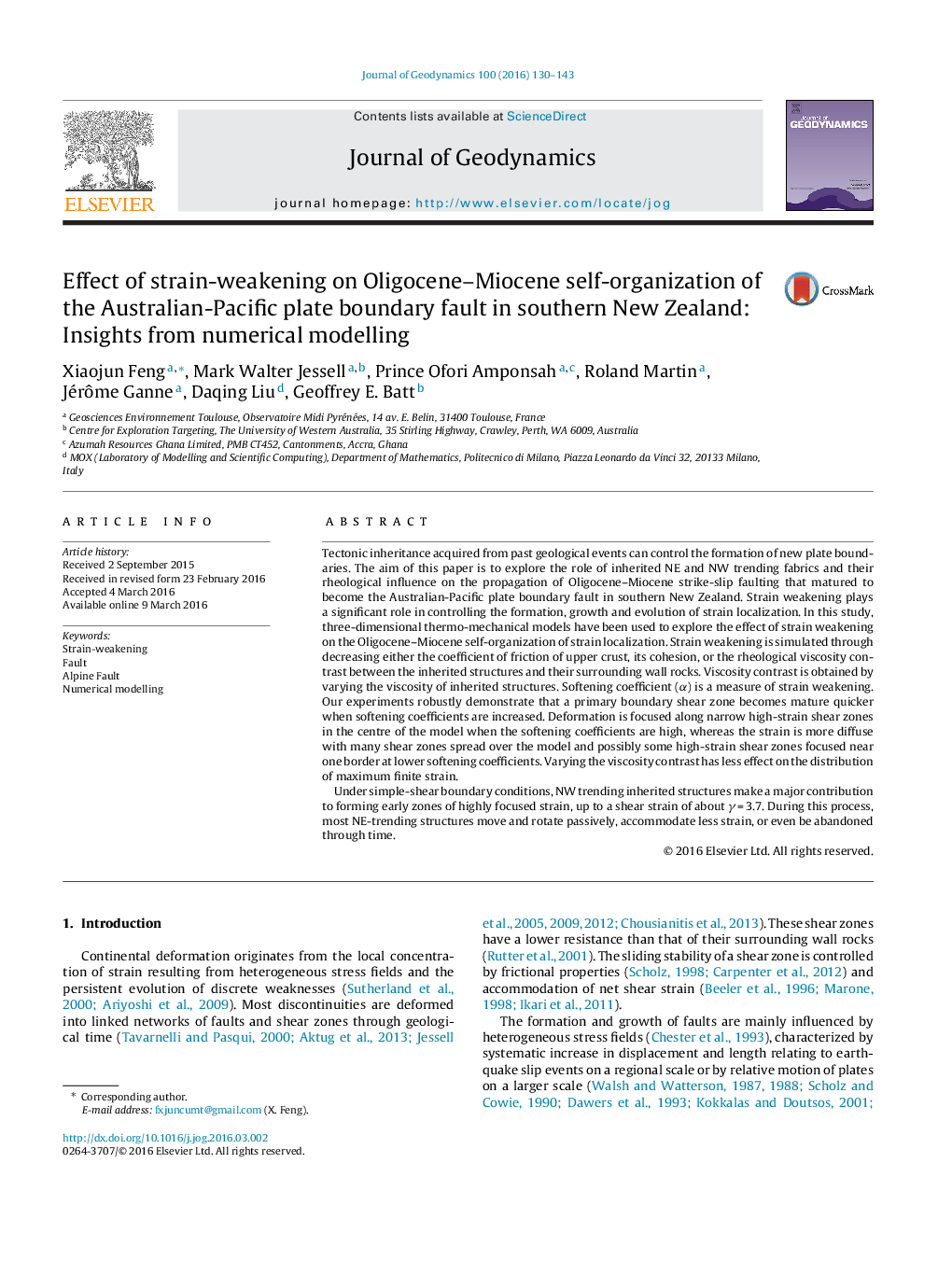| کد مقاله | کد نشریه | سال انتشار | مقاله انگلیسی | نسخه تمام متن |
|---|---|---|---|---|
| 6433073 | 1635750 | 2016 | 14 صفحه PDF | دانلود رایگان |
- We have used three-dimensional thermo-mechanical models to explore the Oligocene-Miocene self-organization of the Australian-Pacific plate boundary fault.
- Both strain weakening and orientations of inherited tectonic structures control the process of strain localization.
- We have reconstructed the evolution of the Alpine Fault during the Oligocene-Miocene times.
Tectonic inheritance acquired from past geological events can control the formation of new plate boundaries. The aim of this paper is to explore the role of inherited NE and NW trending fabrics and their rheological influence on the propagation of Oligocene-Miocene strike-slip faulting that matured to become the Australian-Pacific plate boundary fault in southern New Zealand. Strain weakening plays a significant role in controlling the formation, growth and evolution of strain localization. In this study, three-dimensional thermo-mechanical models have been used to explore the effect of strain weakening on the Oligocene-Miocene self-organization of strain localization. Strain weakening is simulated through decreasing either the coefficient of friction of upper crust, its cohesion, or the rheological viscosity contrast between the inherited structures and their surrounding wall rocks. Viscosity contrast is obtained by varying the viscosity of inherited structures. Softening coefficient (α) is a measure of strain weakening. Our experiments robustly demonstrate that a primary boundary shear zone becomes mature quicker when softening coefficients are increased. Deformation is focused along narrow high-strain shear zones in the centre of the model when the softening coefficients are high, whereas the strain is more diffuse with many shear zones spread over the model and possibly some high-strain shear zones focused near one border at lower softening coefficients. Varying the viscosity contrast has less effect on the distribution of maximum finite strain.Under simple-shear boundary conditions, NW trending inherited structures make a major contribution to forming early zones of highly focused strain, up to a shear strain of about γ = 3.7. During this process, most NE-trending structures move and rotate passively, accommodate less strain, or even be abandoned through time.
Journal: Journal of Geodynamics - Volume 100, October 2016, Pages 130-143
